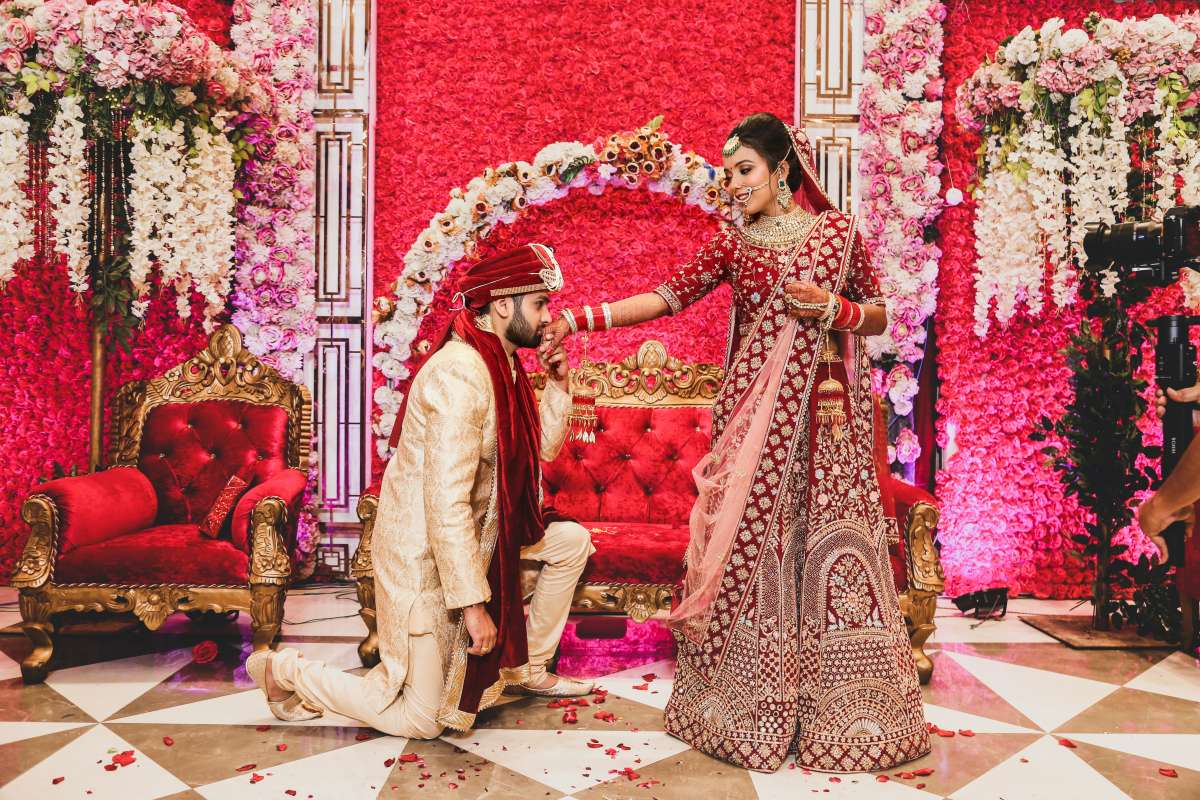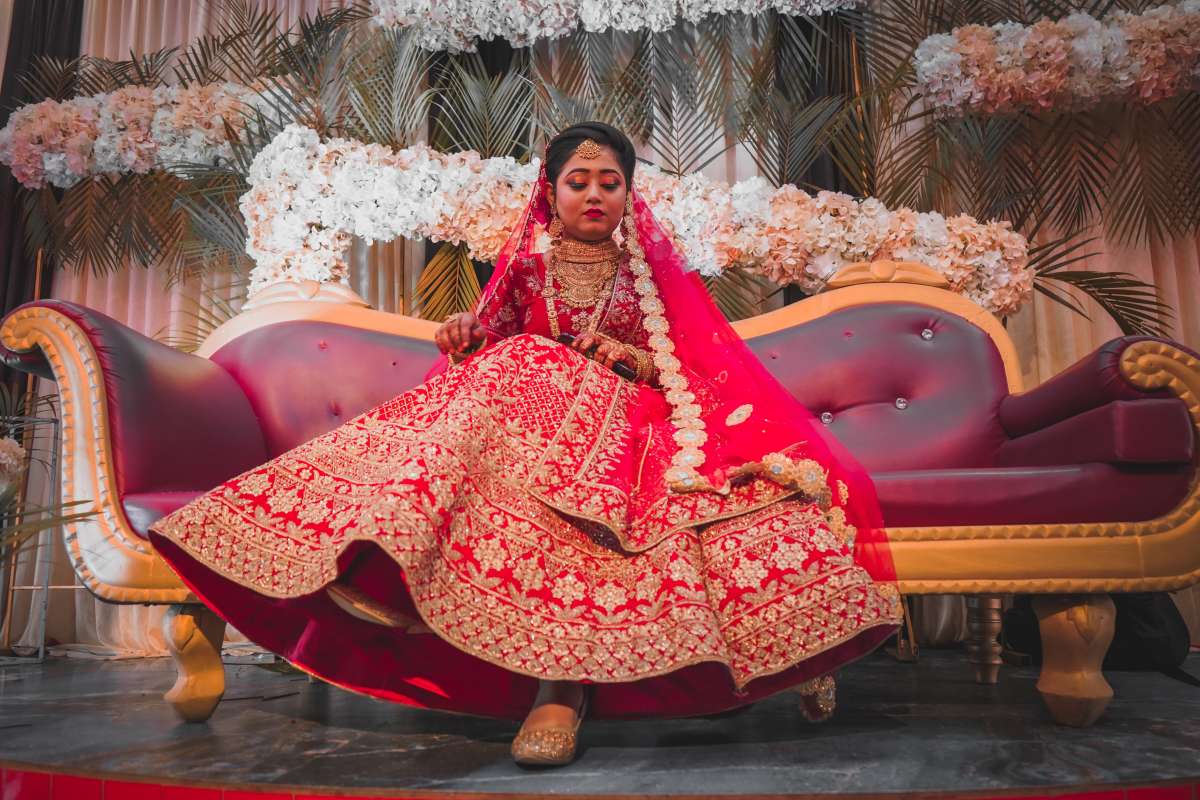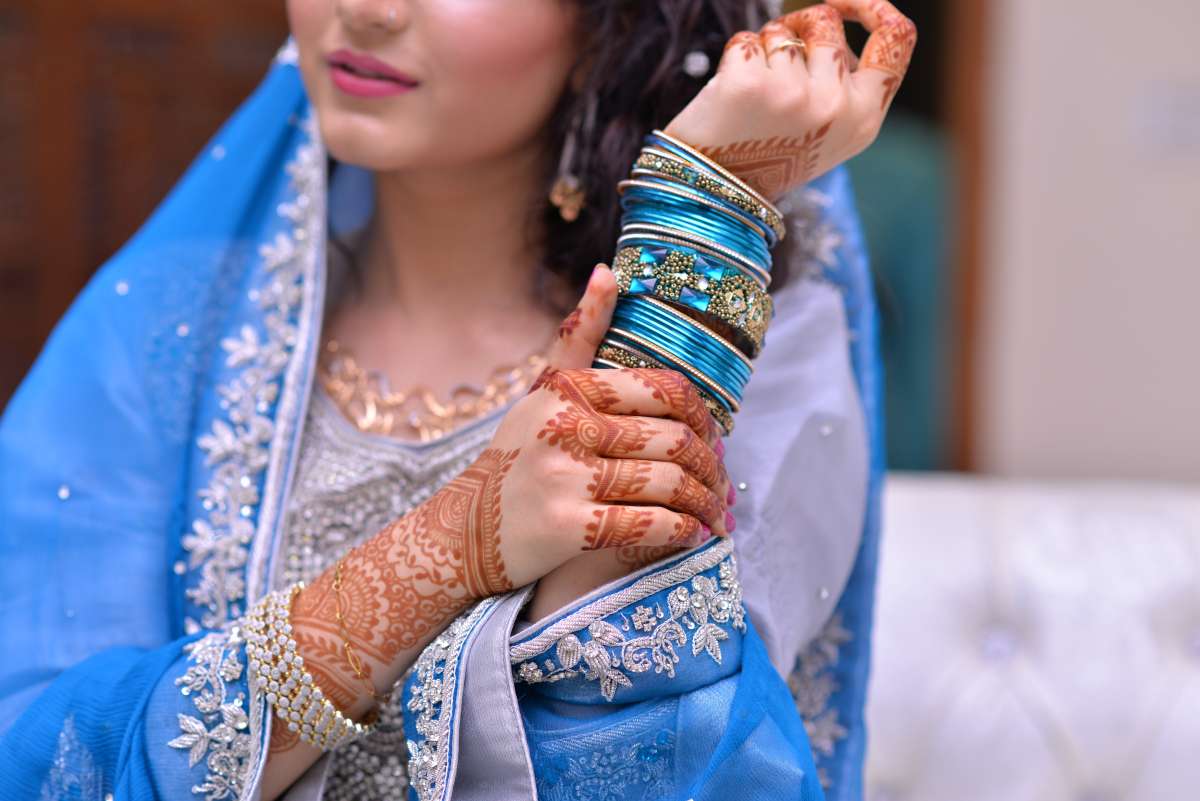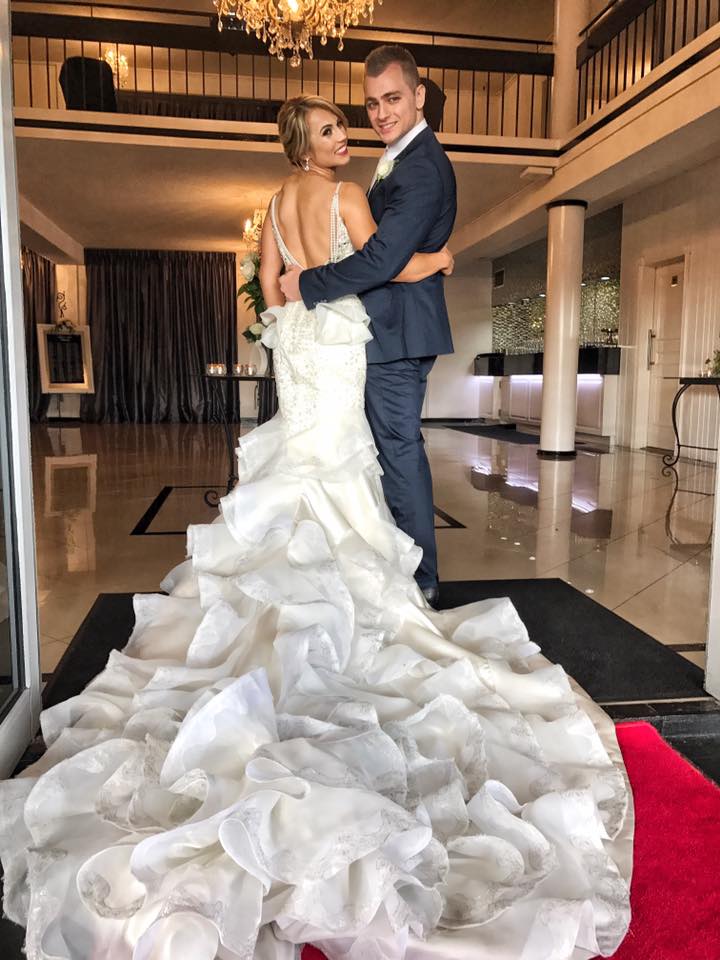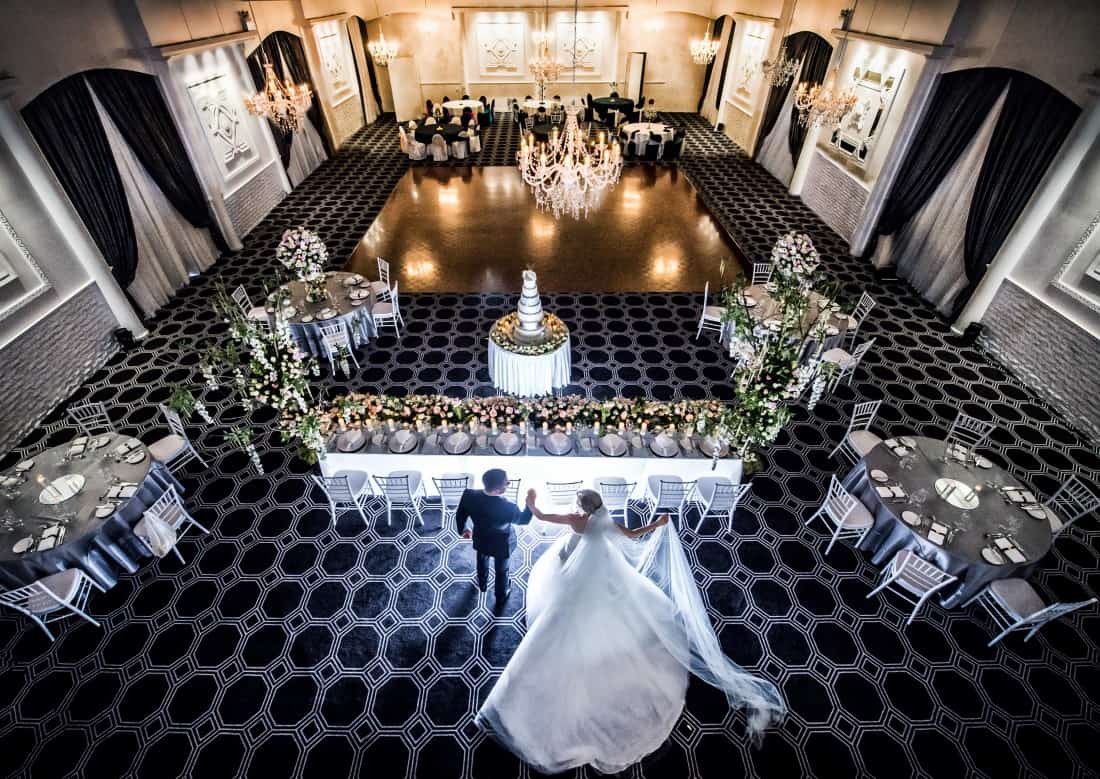When thinking about Indian weddings, the first image that often comes to mind is the beautiful bride adorned in complex attire, a vision that is often the highlight of the event. Regardless of the attention paid to the groom or other wedding party members, the bride remains the main point of the celebration.
The bridal saree or lehenga is a work of art featuring complicated designs and delicate embroidery. Depending on the region, how a bride folds her saree and the accessories she chooses can vary, with some customs being optional while others are essential.
A common adornment for brides across India is the bindi—a decorative dot, typically red or white, worn above the eyebrows. This important cultural marker adds to the bride’s overall appearance. In contrast, the groom typically leaves this area of his face bare until the wedding day, when Sindhoor (a red vermillion powder) is applied.
In some regions, particularly in Gujarat, a part of the saree called the “Palav” is often tied in a bow from the front to the back. In South India, brides generally opt for more conservative sarees, often crafted from silk and adorned with gold.
Let’s Get Straight to the Point
Indian bridal wear is rich in cultural significance and varies widely across regions. Traditional red sarees are popular, symbolising love and good fortune, but modern brides are exploring a wider range of colours and styles, including gold, blue, and floral lehengas.
Each outfit is often elaborately embroidered and reflects the bride’s heritage and taste. While many stick to traditional attire, others blend Western influences or opt for comfort with styles like the salwar kameez. Bridal fashion in India is both a celebration of tradition and a space for modern expression.
Indian Wedding Gown Styles
Indian brides have a range of options regarding their wedding attire. Whether they choose a traditional red saree or a modern white gown, they are influenced by cultural norms and personal preferences.
The Traditional Red Wedding Saree
For Indian brides who value tradition, the red saree is often the garment of choice. This is true across different religions in India, including Hinduism, Sikhism, Islam, and Christianity. The red saree is typically made from rich, luxurious materials like silk and is heavily embroidered with gold.
Key features of a traditional red wedding saree include:
- Hand embroidery
- Rhinestones
- Beading and crystals
- Gold fabric accents
- Appliqués
While silk is the most traditional fabric, modern brides sometimes choose alternatives like satin, crepe, or georgette.
Wedding Sarees In Other Colors
Indian brides are not restricted to red sarees. Contemporary brides often explore various colours, reflecting personal tastes and modern trends. You might see brides in sarees of various colours, all equally luxurious and elaborately decorated.
Common colour choices include:
- Peach
- Brown
- Yellow
- Pink
- Orange
- Gold
Regional Variations In Wedding Sarees
The saree is the quintessential Indian bridal attire, and its style and draping vary across regions of India.
- Bengali Wedding Saree
In Bengal, brides typically wear a red or pink saree, often a Benarasi saree, known for its fluid design and fewer folds. The pallu is usually draped over the right shoulder, highlighting its rich beauty.
- Maharashtrian And Tamil Wedding Sarees
In Southern India, particularly in Tamil Nadu and Maharashtra, brides wear sarees known for their lavish silk fabric and glittering gold borders. Tamil brides often opt for a nine-yard saree fold to enhance their figure and showcase the elaborate temple jewellery that is part of their bridal attire. Maharashtrian brides also wear nine-yard sarees, but the folding style can differ, often resembling trousers, which is practical for the busy wedding day.
- Gujarati Wedding Saree
Gujarati brides typically wear sarees made using the Bandhej technique, which involves tying and dyeing the fabric. The pallu is draped from the back to the front, showcasing its intricate designs. These sarees are often adorned with zari embroidery along the borders, adding to their elegance.
- Lehenga Choli
Another popular option for Indian brides is the lehenga choli, which consists of a skirt, a choli (blouse), and a dupatta. The lehenga is often heavily embellished with embroidery, sequins, and zardozi work, making it a luxurious and substantial attire. This traditional outfit has gained popularity in Bollywood and is often passed down through generations as a treasured heirloom.
Western-Style White Wedding Gowns
Some Christian Indian brides opt for Western-style white wedding gowns. These gowns are similar to those worn in the West, though they may feature Indian design elements like intricate embroidery or a sari-like draping.
Salwar Kameez Wedding
In Northern India, the salwar kameez is another common bridal outfit. This comfortable and stylish ensemble makes it a practical choice for many brides. With the right jewellery and a well-chosen dupatta, a bride can look elegant and radiant in this traditional attire.
Cultural Variations In Wedding Gowns
India is a diverse country with multiple languages, religions, and cultural practices. As a result, the choice of wedding attire can vary greatly depending on the bride’s cultural background. In some cases, brides may choose different outfits for the ceremony and the reception, each reflecting local customs and traditions.
Head Covering For A Muslim Wedding
In some cultures, particularly Muslim traditions, brides cover their hair with a veil or scarf. This practice is rooted in the value of modesty and is often observed throughout married life.
Bridal Fashion Trends In India
While the traditional red saree remains popular, newer trends are emerging. Many brides now opt for muted shades of red or incorporating Western elements into their attire. Designers respond to these trends by offering a wider variety of Indian wedding clothes and jewellery. Some brides mix and match styles, combining simpler modern trends with more elaborate traditional elements.
Different Colors Of Bridal Gowns
Indian bridal attire is available in a wide range of colours, each carrying its significance.
1. The Red Bride
Red is traditionally associated with Indian weddings, symbolising love, joy, and good fortune. Despite the influx of new colours into bridal fashion, red remains a classic choice for many brides.
2. The Golden Bride
Gold is a colour that symbolises wealth, grandeur, and light. Many brides choose gold for its luxurious feel, often pairing it with intricate zardozi embroidery.
3. The Embroidered Bride
Embroidery is a significant part of Indian culture, with each region boasting its unique style. Brides often choose heavily embroidered lehengas, showcasing the craftsmanship of their cultural heritage.
4. The Blue Bride
Blue, though less traditional, is gaining popularity among modern brides. It symbolises trust and stability, qualities essential for a successful marriage. Brides who want to make a statement might choose a navy blue lehenga, combining tradition with a modern twist.
5. The Black Bride
While black is traditionally seen as an inauspicious colour in Indian weddings, some modern brides embrace it for its dramatic and powerful connotations.
6. The Ivory Bride
Ivory is a neutral, peaceful colour that symbolises purity and simplicity. Brides who prefer a softer look might opt for an ivory lehenga, which can be elegant and understated.
7. The Peach Bride
Peach is a subtle, feminine colour that offers a gentle alternative to the bolder shades of red and maroon. Brides looking for a soft, romantic look might choose a peach lehenga, which is both modern and timeless.
8. The Floral Bride
Floral lehengas are currently in vogue, offering a fresh and vibrant alternative to traditional bridal attire. These lehengas often feature a combination of pastel colours, which beautifully complement Indian skin tones.
Indian bridal wear is not just about fashion; it is deeply rooted in culture and tradition. Each colour, fabric, and design carries a specific meaning, making the bridal attire reflect the bride’s identity and heritage.
While traditional styles remain popular, modern trends allow brides to express their individuality, blending the old with the new in ways that create stunning results. Whether you choose a red saree, a golden lehenga, or a floral gown, your wedding attire is a key element in celebrating your marriage, embodying the rich assortments of Indian culture and tradition.

